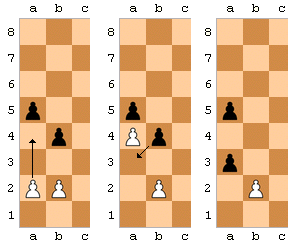Long-tailed weasels are ferocious predators found in North America that likes to stalk its prey and pounce it with lightning speed. With small prey such as mice, the weasel will wrap its long body around the prey and then crush the head with a strong bite. As the weasel is very slender and sleek, it can easily dig into burrows to hunt hiding animals by crushing its skull, or to add variety, ripping out the windpipe.
Although it usually preys on small rodents, the long-tailed weasel is also known to fearlessly attack much larger animals such as birds and rabbits. As wild rabbits tend to be bulkier (sometimes even ten times larger) than the weasel, it cannot use its characteristic hunting style. To overcome this difficulty, these weasels have developed a strange behaviour that zoologists have labelled the Weasel War Dance. The War Dance (NB: two videos on what it looks like) is a chaotic set of movements where the weasel runs left and right frantically, jumping and flipping upside-down and almost appearing insane. This type of behaviour is observed in other species of weasels and ferrets when they are excited, but few use it as a hunting tool.
It has been observed that when the long-tailed weasel performs a War Dance in front of a rabbit, the rabbit becomes dazed and enters a trance-like state. It is possible that the chaotic and confusing movements disorient the rabbit. Once the rabbit has been disabled, the weasel promptly jumps on the rabbit’s back and delivers a powerful bite to the back of the neck, instantly killing the rabbit.
Wild weasels and stoats practise this skill by playfully ambushing each other when they are young.
Long-tailed weasels, despite their cute appearance, are notorious for their vicious temper. Being a carnivore that prefers fresh meat, it actively hunts and collects food. Despite seeking fresh food, the weasel also exhibits a curious behaviour of storing carrions, which is often only eaten in times of food shortages. This behaviour leads to the weasel going on killing sprees just because they can. Long-tailed weasels have also been observed lapping up blood from the wounds they inflict, and enjoys making their nest from the fur of their victims.



